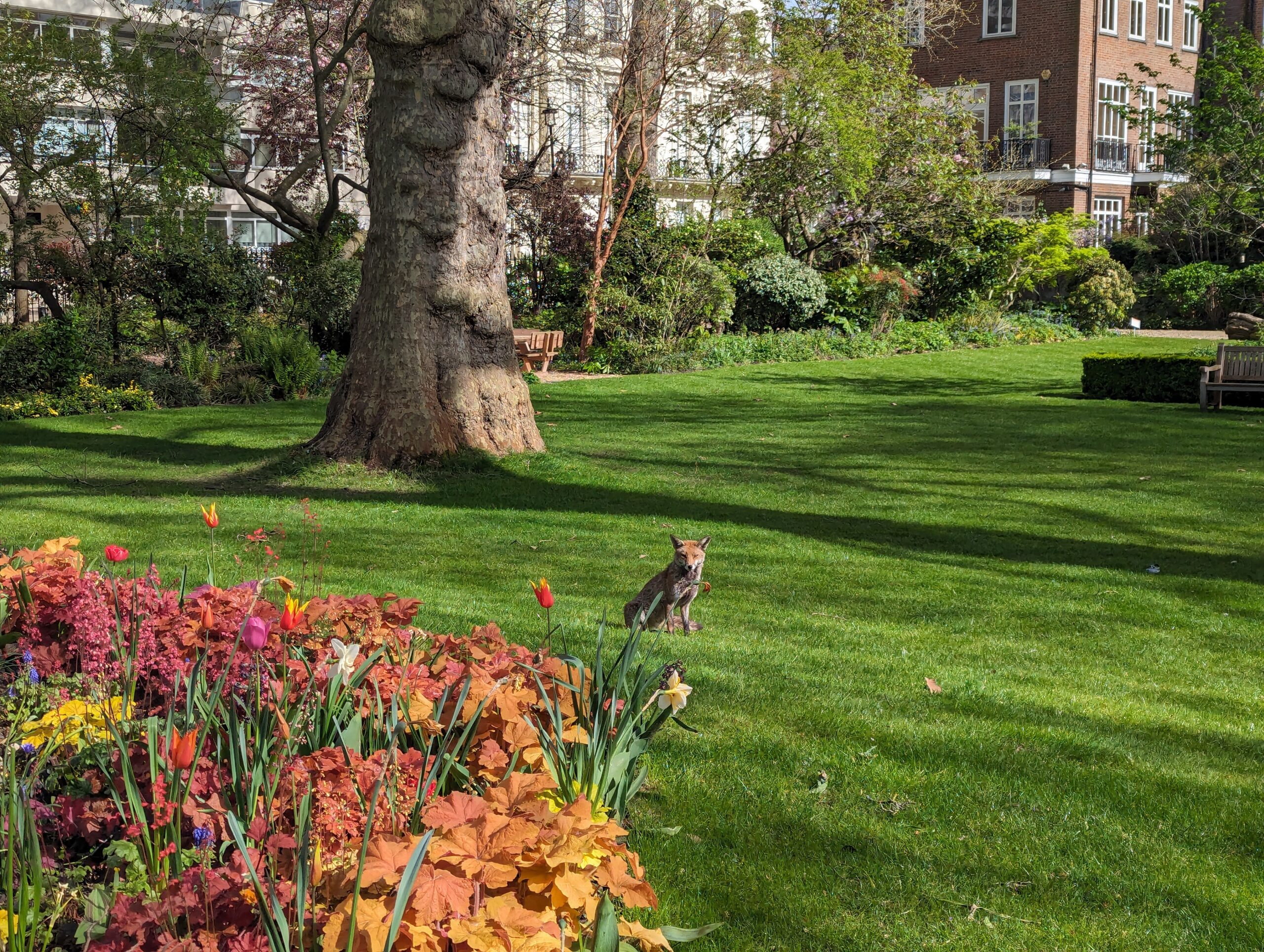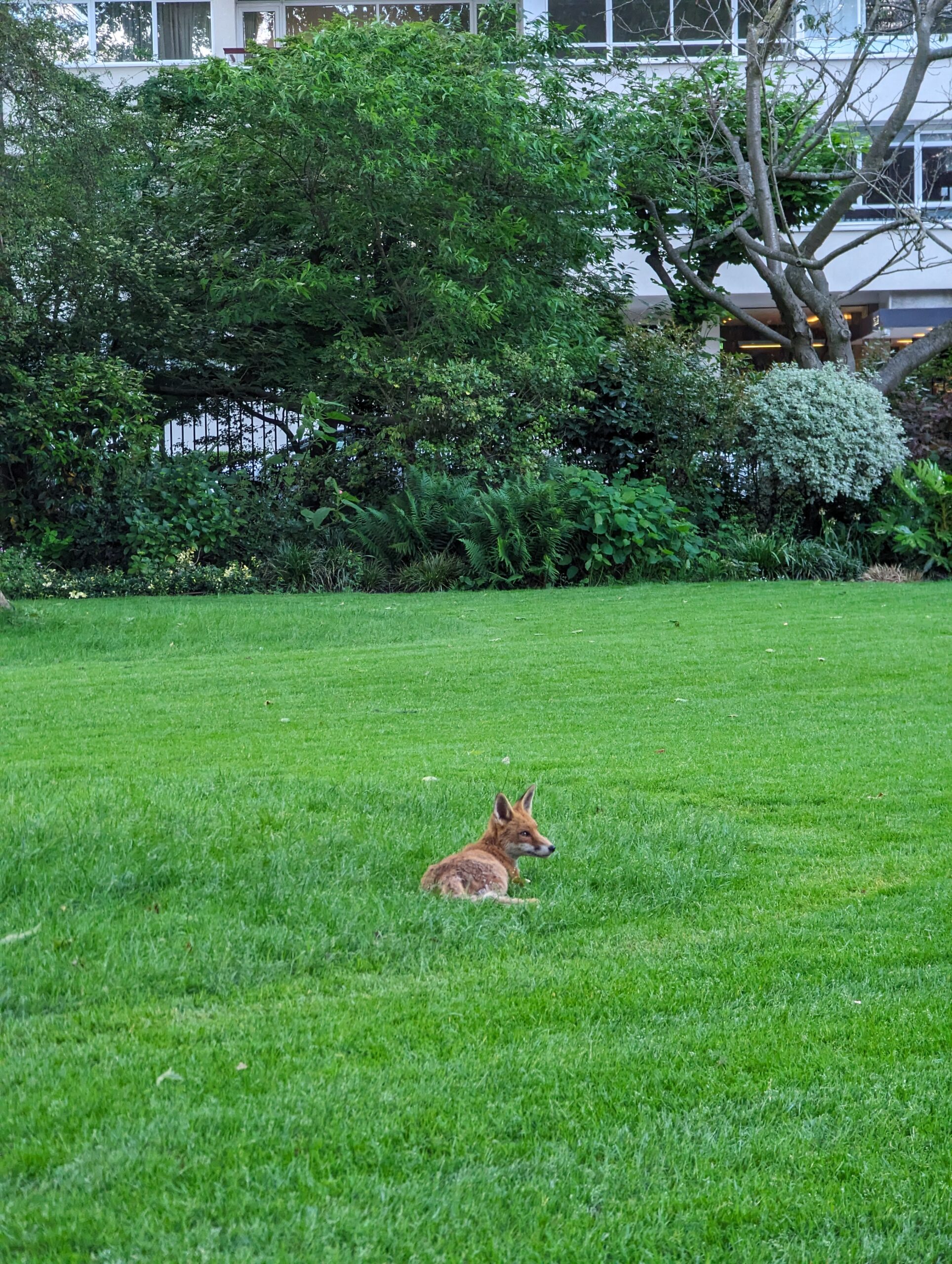Residents: Sign-up for exclusive content
Sign in
It’s not just discerning city folk who seek out accomodation in Gloucester Square, foxes do too. This 1.6 acres of tranquility, surrounded by ample food supply in the neighbourhood, make the Square a venue of choice for resting and nesting foxes.
Foxes are highly territorial, which means the presence of one denning fox in an area will typically deter others, however removing that fox is largely pointless, as the free territory will quickly become occupied by a new fox (unless it is frequently scent-marked by a competitive species, such as a large dog).
The Garden’s policy is therefore one of management (deterring the foxes in certain areas of the garden, e.g. the playground), rather than wasting vast resources in the impossible pursuit of preventing them altogether.
By reducing the area where prevention (e.g. protecting the shed with burried fences) and intervention measures are required (e.g. monitoring newly dug dens (only) and closing if no sign of ongoing activity), the Committee are able to effectively reduce the nusiance foxes may cause.


The presence of foxes in the Garden is nevertheless a nuisance; they:
Ahead of the 2024 Playground Refurbishment project, the Garden Caretakers actioned the advice in the 2011 Fox Report, and installed a 50cm deep steel mesh around the concrete base of the shed to prevent further denning under the shed, which had been prevalent up until that point.
Urban foxes in the UK are afforded legal protection primarily through animal welfare and wildlife protection laws, which apply equally in urban environments. The Wildlife and Countryside Act 1981 prohibits the use of inhumane or indiscriminate methods of killing or capturing foxes, such as self-locking snares, poisons, or certain types of traps. This means that even in urban settings—where foxes often live in close proximity to people—residents, councils, or pest control professionals must follow strict legal guidelines if they seek to deter or remove foxes from private or public land.
Under the Animal Welfare Act 2006, it is an offence to cause unnecessary suffering to any wild mammal under human control. This includes urban foxes that are trapped or otherwise handled. Anyone interfering with foxes, especially during breeding season when cubs may be present, must take care to avoid harm. Causing injury or distress to foxes—whether deliberately or through careless pest control methods—can result in prosecution. The Act also places responsibilities on those who deal with urban foxes, including local authorities, to ensure humane treatment.
Importantly, fox dens (or earths) in urban areas may receive indirect protection during certain times of the year. Disturbing a den that contains dependent cubs, for example by blocking or destroying it, could constitute an offence under animal welfare law. While there is no specific law that outright forbids disturbing fox dens, the consequences of harming young animals or separating them from their mother could lead to legal consequences under cruelty provisions. As such, best practice when managing fox presence in urban areas is to consult with wildlife experts or licensed pest controllers who understand and follow the relevant legislation.
Sign up to receive latest news and events directly to your inbox.
© 2022 Gloucester Square, supported by 48-49, 47, 44-46, 26-28, 13-14 Gloucester Square and 21 Hyde Park Square